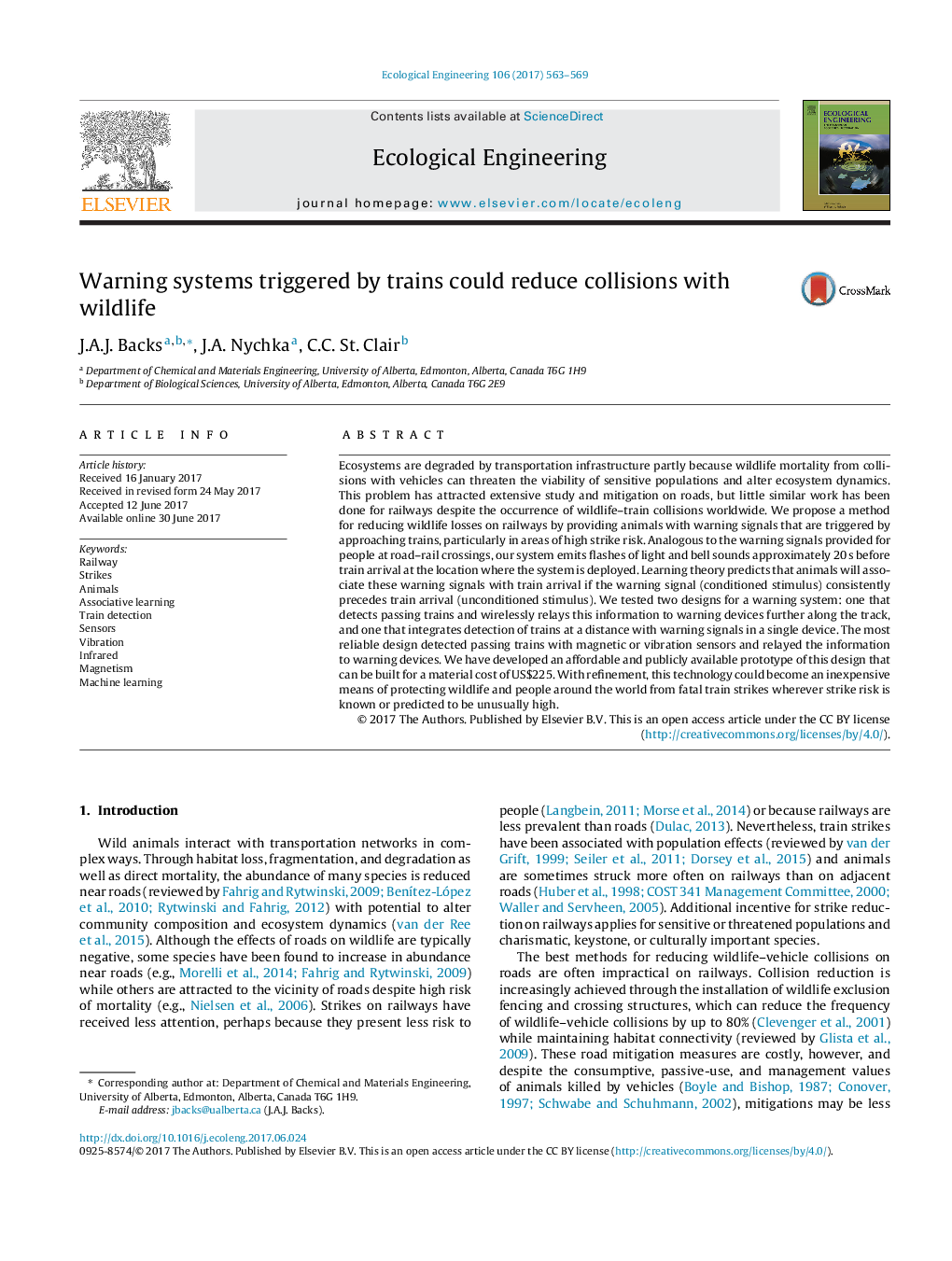| Article ID | Journal | Published Year | Pages | File Type |
|---|---|---|---|---|
| 5743874 | Ecological Engineering | 2017 | 7 Pages |
â¢Trains sometimes strike animals that fail to detect trains early enough.â¢Strike risk might be reduced if animals were warned of approaching trains.â¢We built a system to reliably detect trains as they approach high-risk locations.â¢Detections trigger warning lights and sounds similar to road-rail crossing signals.â¢Our designs are publicly available, inexpensive, and easy to install on any railway.
Ecosystems are degraded by transportation infrastructure partly because wildlife mortality from collisions with vehicles can threaten the viability of sensitive populations and alter ecosystem dynamics. This problem has attracted extensive study and mitigation on roads, but little similar work has been done for railways despite the occurrence of wildlife-train collisions worldwide. We propose a method for reducing wildlife losses on railways by providing animals with warning signals that are triggered by approaching trains, particularly in areas of high strike risk. Analogous to the warning signals provided for people at road-rail crossings, our system emits flashes of light and bell sounds approximately 20Â s before train arrival at the location where the system is deployed. Learning theory predicts that animals will associate these warning signals with train arrival if the warning signal (conditioned stimulus) consistently precedes train arrival (unconditioned stimulus). We tested two designs for a warning system: one that detects passing trains and wirelessly relays this information to warning devices further along the track, and one that integrates detection of trains at a distance with warning signals in a single device. The most reliable design detected passing trains with magnetic or vibration sensors and relayed the information to warning devices. We have developed an affordable and publicly available prototype of this design that can be built for a material cost of US$225. With refinement, this technology could become an inexpensive means of protecting wildlife and people around the world from fatal train strikes wherever strike risk is known or predicted to be unusually high.
Graphical abstractDownload high-res image (116KB)Download full-size image
